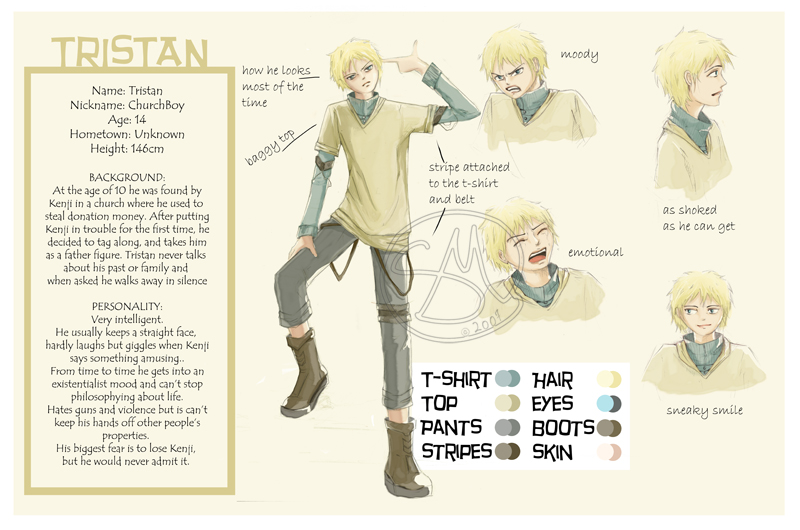Yay! Time for the technical part of things. I'm gonna talk a bit about the principals of animation and where/how/if i'm gonna apply them to the final project.
One of the main things to master in animation really. It gives characters or things volume and weight. The amount of squash and stretching all depend on what you are animation and what style it is. For the final project, i think most of it will be in the facial expression... it's a funny horror story, so you need to get those eyes popping out, the mouth stretching, arms flying high is the hair... etc.
Anticipations are the movements done before actions. Every action has an anticipation, some are big and obvious... like someone punching another really hard, so they bring their arm back THEN punch... some are small but they are there. Sometimes those, for comic purposes, you can have an action without anticipation, but sometimes it just looks a bit odd. You know those Chinese films of samurais flying? I've always found pretty odd the way they 'jump' in the air with no anticipation at all... it's so unatural. Of course, the whole thing is fantasy, but they could try be a bit more realistic about it!
So, anticipation is important, and like in squash and stretch, it also influence the characters style and personality.
Staging is what's going on in the scenes and how it all communicates the story to the audience. It's having harmony between characters actions and poses, background, camera angles, mood, etc to make sure everything is telling the story as it should be. It's a very important principal, if not planned correctly it could damage the storytelling and the audience could get lost in it and lose interest.
- Follow Through & Overlapping
I always find both of them quite hard, but overlapping is probably harder. They are basically the principal of inertia. A furry object flying forward, if it comes to a sudden halt, the fur will not stop straight away, it will keep moving forward then stop because it's attached to the object. If that object istead of halting turns, the fur would have 2 forces acting on it, the inertia of moving forward, then being dragged by the object to the side it had turned to. I find it complicated because it all depend of the mass of the 'fur' and the speed of the object... so its not that easy to time correctly.
This is when you draw your animation frame by frame, without keyframes. It's one drawing after the other until it completes the action. It's not as planned out as pose to pose animation and the object or character should change sizes and shape as it goes.
Like i mentioned, pose to pose is when you plan keyframes for the action and then draw the inbetweens. It's good to keep the characters or object you are animation the same size. I found it also helps to know how many frames you need to draw for the action you are animating. In a team, the leader animator would draw the keyframes and the assistants would draw the inbetweens. I suppose that helps speeding up the animation process.
Every action starts slowly then speeds up and before it ends, its slows down. The more drawings means the character/object will move slower, so obviously, more movement in less frames means the character/object will move faster. Like in the ball exercise that we've done so many times in this course... as the ball goes up it's slower (more drawings) when it's up in the air and falling down again it's faster (less drawings). This is very important for the animation to feel smooth. Of course, everything that break the rules is funny, so for comical purposes you can always not use one of the other. Like in Family Guy when someone falls. It's sudden and unatural, so it's funny.
Humas and animals have circular movement path, like turning the head for example. That's is true for almost every action that doesn't involve machines or other mechanical devices. Using arcs when planning an action will make the animation smoother.
For the animatics, it would be interesting to actually draw the arcs and leave them there since not all the frames will be drawn. Arcs are also drawn in storyboards to represent characters and objects movements if necessary.
Real life can be boring compared to animations and i believe it's because in animation most actions are exaggerated. I don't mean you have to over do it, cos that would make it all look a bit too much, but say a character is running, very long and stretched strides makes it more interesting. It all goes with the characters personality, mood and story as well. Everything can be exaggerated in animation, but as long as it's well thought through.
I think we'll probably use alot of it in out project. Big popping eyes, extremely raised eye brows, exaggerated shivering... they all go with the mood we are trying to get.
Those are the actions that follow the main action... gee, how obvious does that sound >
AppealIt's hand to explain this because it's basically everything. It's motion, timing, artwork, character development, style, personality, mood, storytelling, plot etc. Everything put together in harmony should are a certain appeal.
What appeals to me are well developed character, personality and interaction between them and the plot. I hope we can achieve that in out animatics... it's all about getting the composition right.
Will this be my last entry? @_@ Probably. I tried putting as much as i could of my ideas here without overdoing it (it happens sometimes). From now on i can be found here
http://nowayanimation.blogspot.com/










